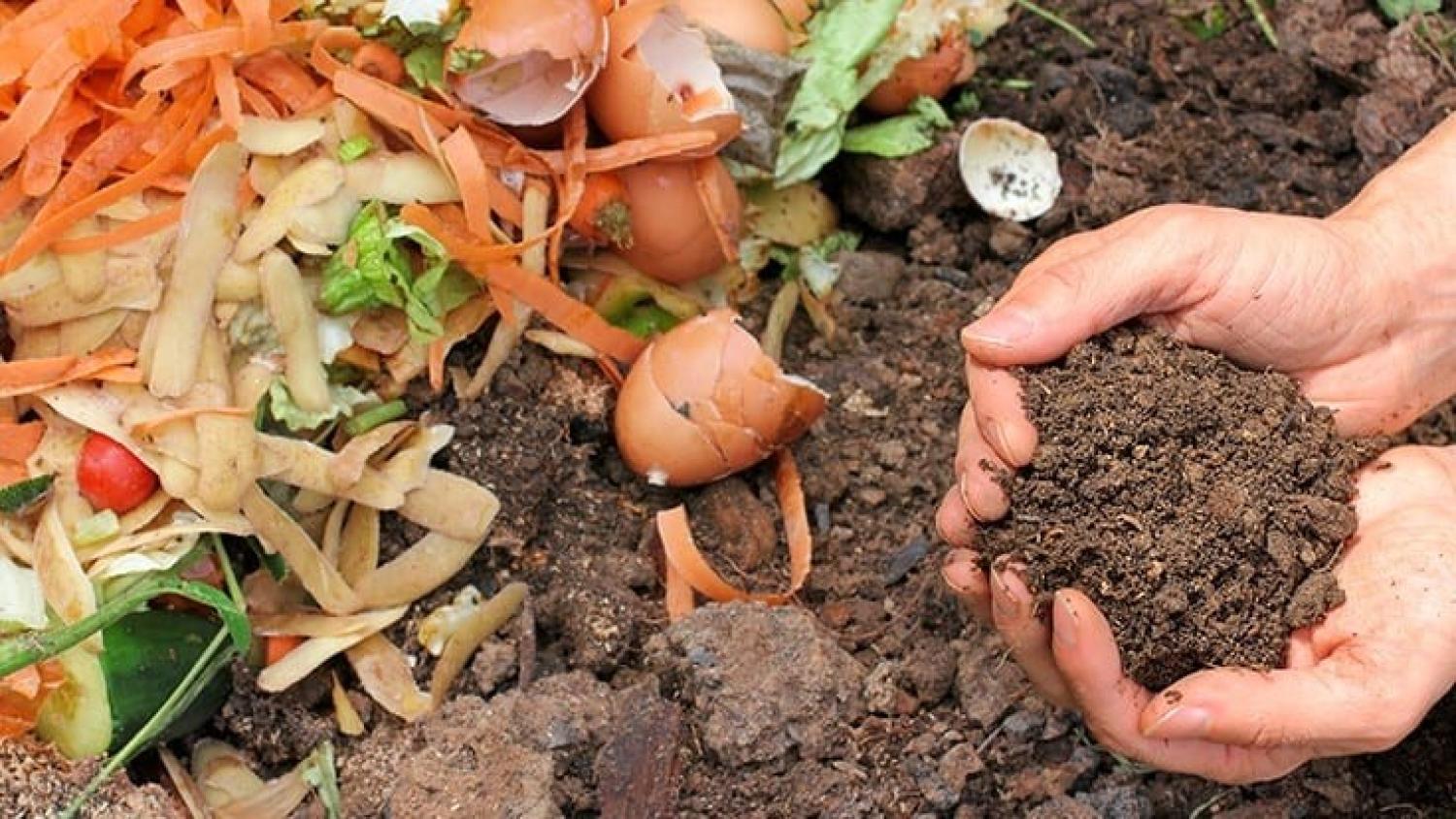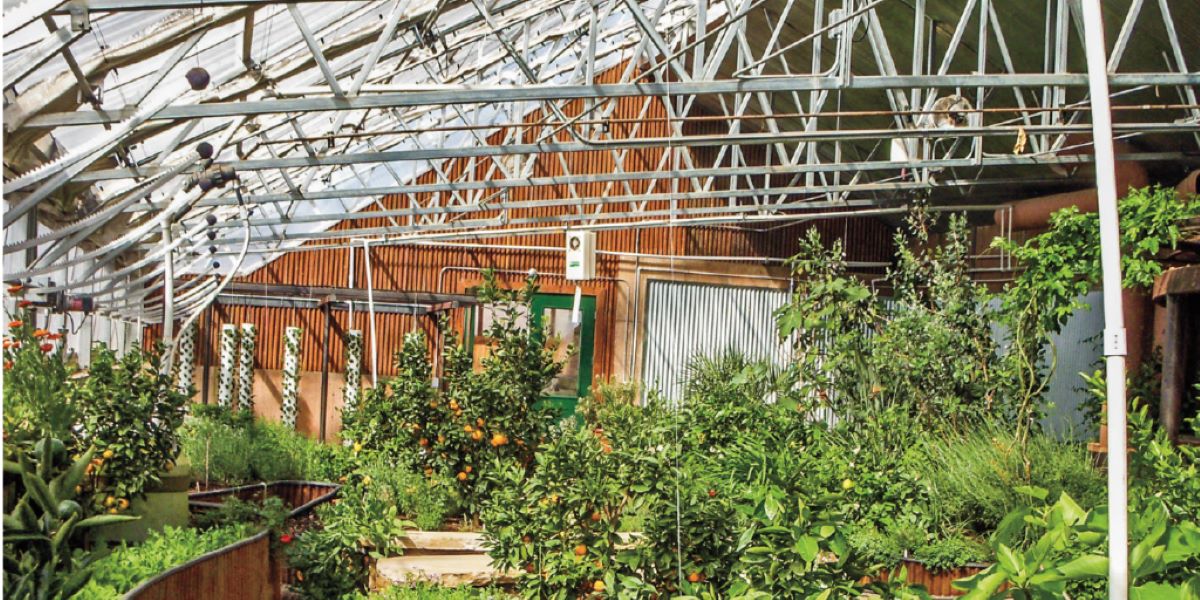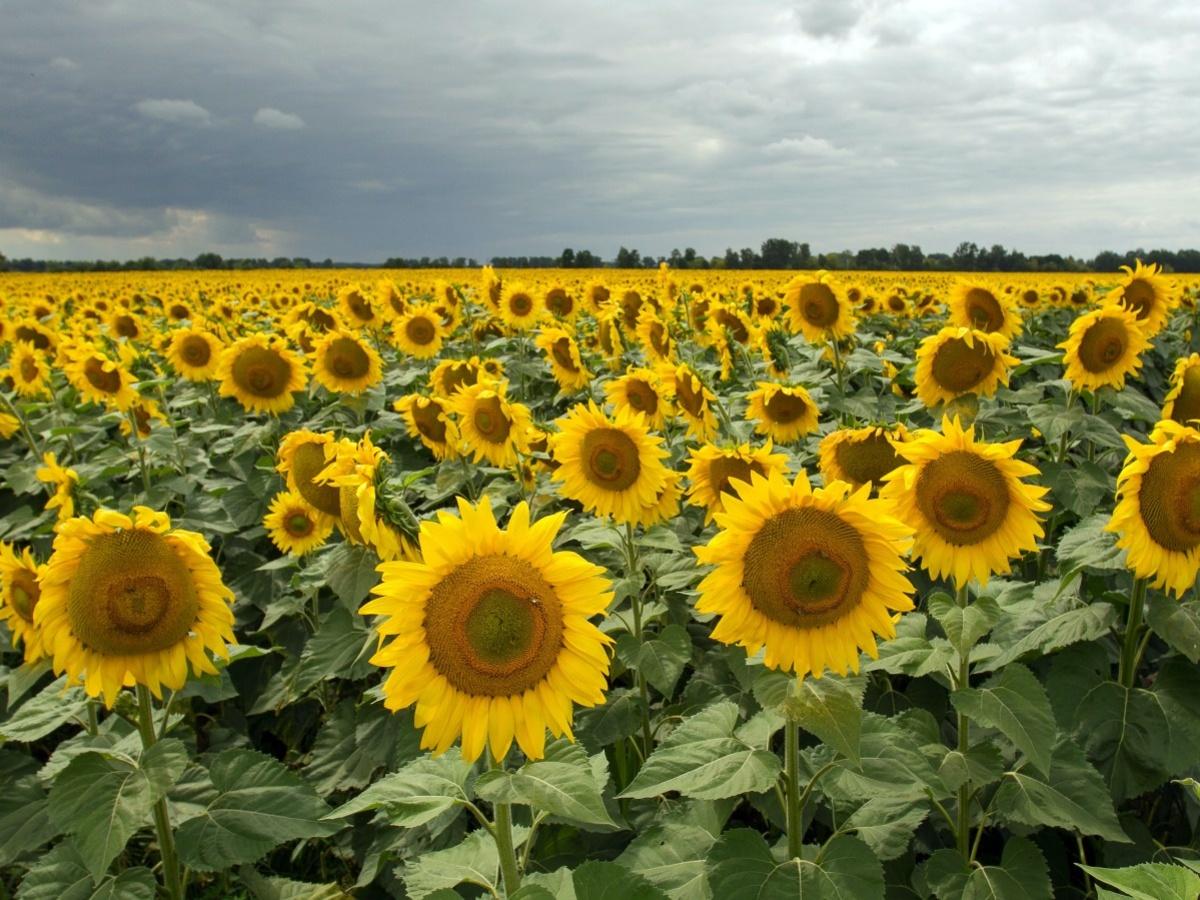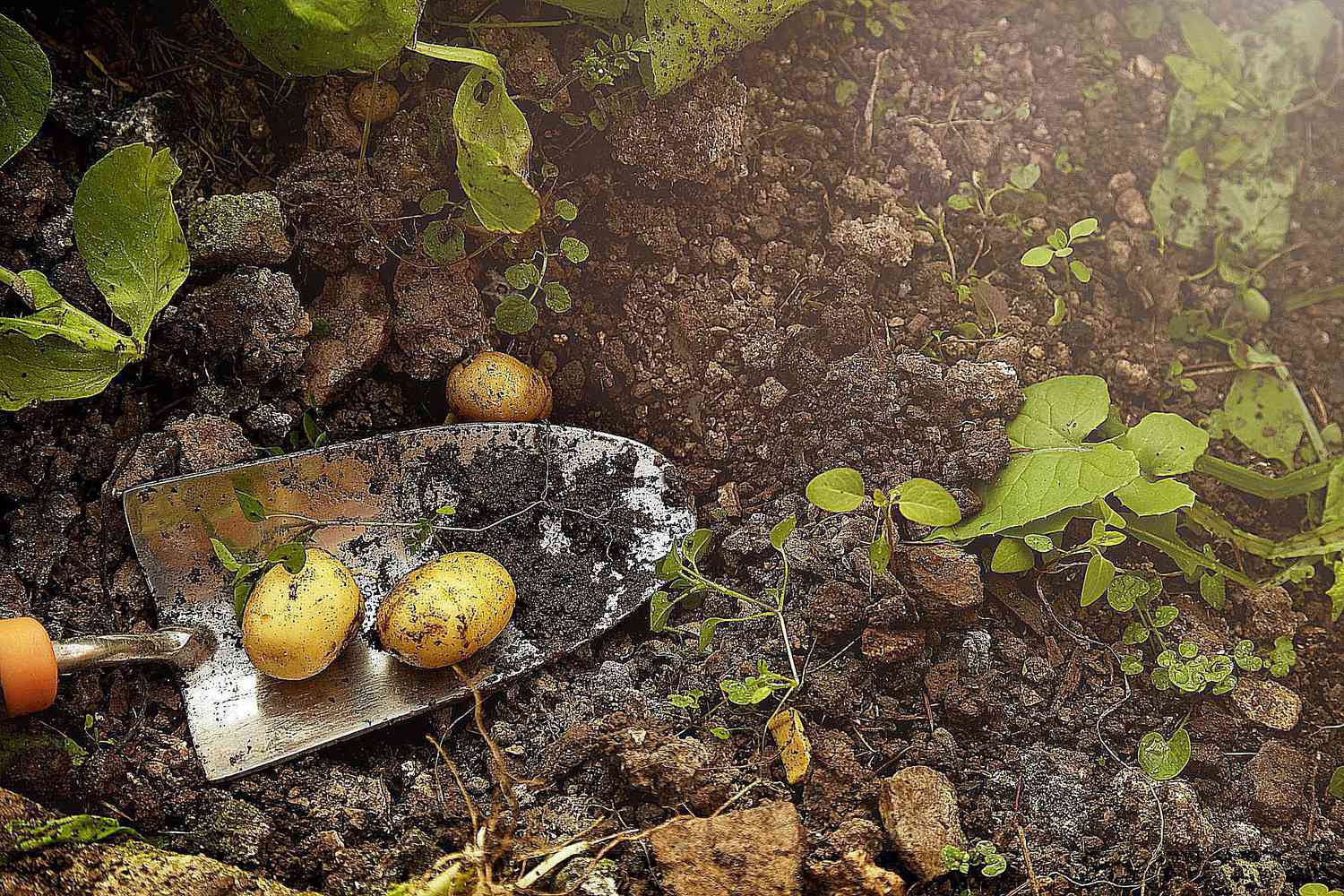Home>Gardening Basics>Understanding Soil>What Do You Use Topsoil For
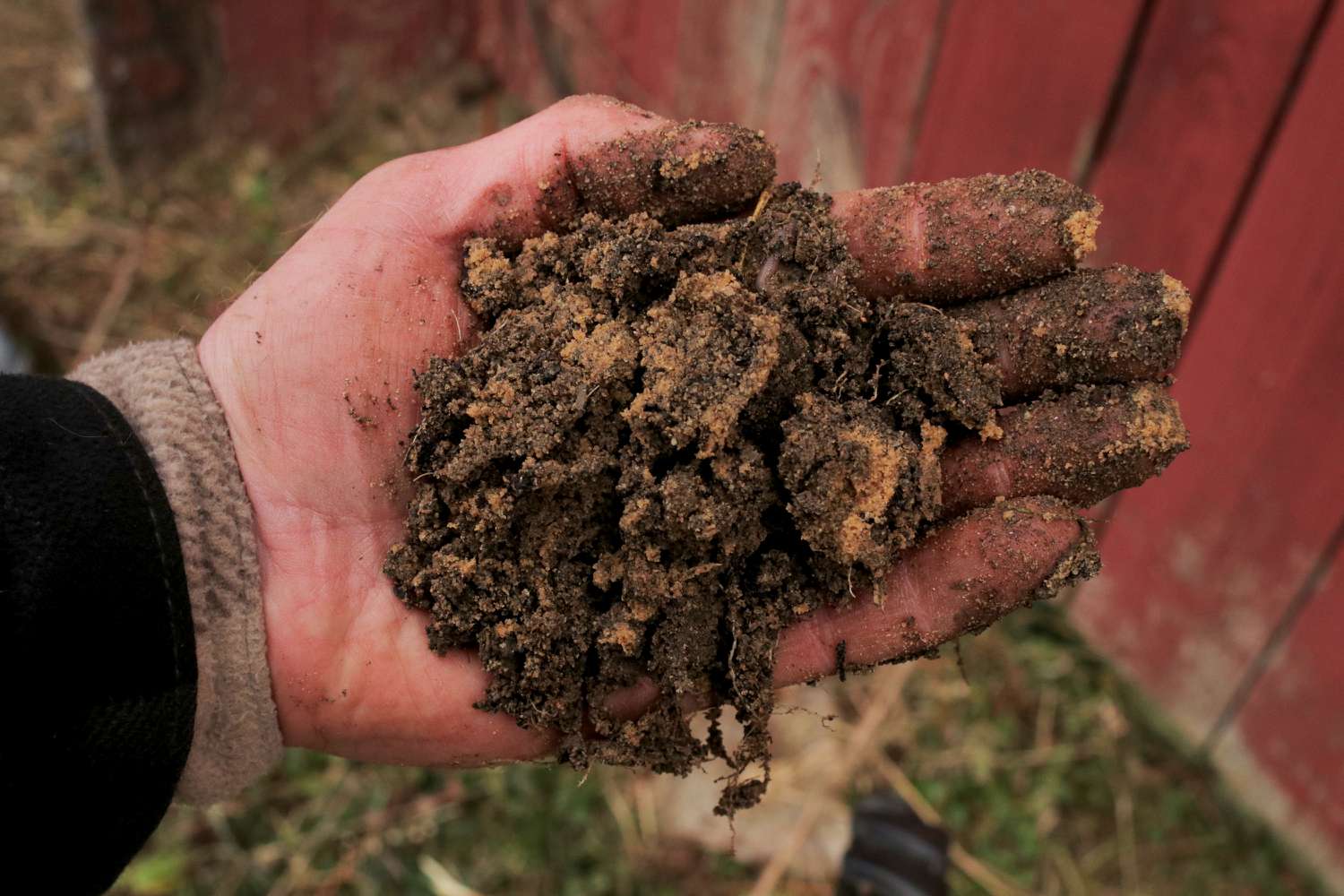

Understanding Soil
What Do You Use Topsoil For
Modified: January 22, 2024
Learn the various uses of topsoil and how it contributes to a healthy garden. Dive into understanding soil composition and its crucial role in landscaping and agriculture.
(Many of the links in this article redirect to a specific reviewed product. Your purchase of these products through affiliate links helps to generate commission for Chicagolandgardening.com, at no extra cost. Learn more)
Table of Contents
Introduction
Welcome to the fascinating world of topsoil! While it may seem like a mundane subject, topsoil plays an essential role in various aspects of our lives. From gardening to agriculture, erosion control to construction, topsoil is a valuable resource that supports the growth and development of plants and provides a stable foundation for our infrastructure.
But what exactly is topsoil? Simply put, topsoil is the uppermost layer of soil found on the Earth’s surface. It is a mixture of organic matter, minerals, water, and air, all of which contribute to its fertility and ability to support plant life. This layer is usually dark in color, indicating the presence of organic material such as decomposed plants and animal matter.
The significance of topsoil cannot be overstated. It serves as the “skin” of the Earth, where the majority of plant roots reside, and where the majority of biological activity takes place. Without topsoil, the world as we know it would be a barren and lifeless place.
In this article, we will explore the many uses and benefits of topsoil. Whether you are a green-thumbed gardener, a farmer striving for bountiful crops, a construction professional, or simply someone curious about the wonders of soil, you will find valuable insights here.
Definition of Topsoil
Before delving into the various uses of topsoil, it is important to have a clear understanding of what it actually is. As mentioned earlier, topsoil is the uppermost layer of soil, typically ranging in depth from 2 to 8 inches. It is formed through the gradual process of weathering and decomposition of rocks and organic matter over thousands of years.
Topsoil is characterized by its composition, which consists of three key components: minerals, organic matter, and living organisms. The mineral portion is derived from parent rocks and contains various nutrients essential for plant growth, such as nitrogen, phosphorus, and potassium. The organic matter component is the result of decomposed plants, animals, and microorganisms, providing additional nutrients and improving the soil’s structure and water-holding capacity. Finally, the living organisms present in topsoil, including bacteria, fungi, earthworms, and other soil organisms, help in nutrient cycling and decomposition, further enhancing soil fertility.
The quality and composition of topsoil can vary depending on geographical location and land management practices. It can range from sandy to clayey and have different levels of organic matter content. Additionally, the presence of essential nutrients and pH levels can also influence its suitability for different plant species.
Soil scientists and agronomists use various methods to analyze and classify topsoil based on its physical and chemical properties. These assessments help determine its suitability for specific applications and inform land management practices for optimal crop production, erosion control, and environmental sustainability.
Now that we have a solid understanding of what topsoil is, let’s explore the multitude of ways in which it is utilized in various fields and industries.
Importance of Topsoil
Topsoil plays a crucial role in supporting life on Earth. It serves as a vital resource for plants, providing them with the necessary nutrients, water, and a supportive medium for root growth. However, its importance extends far beyond just plants. Let’s explore the key reasons why topsoil is essential:
- Nutrient Cycling: Topsoil contains a rich concentration of essential nutrients, including nitrogen, phosphorus, and potassium, which are vital for plant growth. It acts as a reservoir for these nutrients and plays a crucial role in nutrient cycling. Through the process of decomposition and biological activity, organic matter in the topsoil breaks down into nutrients that plants can absorb and utilize. This process ensures a sustainable supply of nutrients for the growth and productivity of vegetation.
- Water Retention: Topsoil possesses excellent water-holding capacity, allowing it to retain moisture and prevent it from draining away too quickly. This is crucial for plants, especially during periods of drought or low rainfall. The organic matter and the soil structure help create small air spaces that can hold water, reducing the risk of soil erosion and providing a steady supply of moisture to plant roots.
- Erosion Control: The topsoil layer acts as a protective cover for the underlying soil. It helps prevent erosion by absorbing and dispersing the impact of rainfall or water runoff, reducing the risk of soil loss. The presence of organic matter in the topsoil enhances its stability and binding properties, reducing the likelihood of soil particles being carried away by wind or water erosion.
- Microbial Activity: Topsoil is a thriving ecosystem, housing a diverse population of microorganisms such as bacteria, fungi, and earthworms. These microorganisms play a crucial role in the decomposition of organic matter, nutrient recycling, and the improvement of soil structure. They break down complex organic compounds, making nutrients more readily available to plants and enhancing soil fertility.
- Biodiversity Support: The topsoil layer provides a habitat for a wide range of organisms, from earthworms to insects and small mammals. This biodiversity contributes to the overall health and resilience of ecosystems, supporting the food web and promoting ecological balance.
As you can see, topsoil is an invaluable resource that supports the growth of plants, helps maintain soil fertility, prevents erosion, and promotes biodiversity. It serves as the foundation for sustainable agriculture, gardening, construction, and various other industries.
Gardening and Landscaping
Topsoil is a gardener’s best friend. It provides the necessary foundation for healthy plant growth, ensuring beautiful, vibrant gardens and landscapes. Whether you have a small backyard garden or a sprawling landscape project, topsoil is essential for several reasons:
- Plant Growth: The nutrient-rich composition of topsoil is ideal for promoting plant growth. It provides plants with essential nutrients, including nitrogen, phosphorus, and potassium, which are necessary for their development. Additionally, the organic matter in topsoil improves soil structure, allowing for better root penetration, water uptake, and nutrient absorption.
- Improved Drainage and Water Retention: Topsoil helps maintain optimal moisture levels in the garden. It has excellent water-holding capacity, preventing excessive water drainage while ensuring adequate drainage to prevent waterlogging. This balance is crucial for plant health, as it prevents root rot and allows for the efficient uptake of water and nutrients.
- Weed Control: Using topsoil in gardening projects can help suppress weed growth. A layer of topsoil acts as a barrier, preventing weed seeds from germinating and competing with desired plants for resources. Additionally, the use of nutrient-rich topsoil can help establish healthy plants, effectively choking out weeds through dense foliage.
- Soil Enrichment and Restoration: Topsoil can be used to amend existing soil that is lacking in nutrients or has poor structure. By adding a layer of nutrient-rich topsoil to existing soil, gardeners can improve soil fertility and structure, providing a healthy environment for plant growth. This is especially useful in urban environments where the soil may be depleted or contaminated.
- Landscape Design and Aesthetics: Topsoil plays a significant role in creating visually appealing landscapes. It allows for the manipulation of soil levels, creating gentle slopes, raised beds, and terraces. Additionally, topsoil can be used to enhance the aesthetic appeal of outdoor spaces by providing a lush, green base for lawns, flower beds, and ornamental plants.
Whether you’re planting a vegetable garden, nurturing a flower bed, or designing an intricate landscape, topsoil provides the essential foundation for success. Its rich composition, coupled with its water-retention properties, ensures optimal conditions for plant growth and creates a visually stunning outdoor space.
Agriculture and Crop Production
Topsoil plays a vital role in agriculture and crop production, serving as the backbone of sustainable farming practices. Farmers and agricultural professionals recognize the importance of topsoil for several key reasons:
- Nutrient Supply: Topsoil provides a rich source of essential nutrients for crops to thrive. Nutrients such as nitrogen, phosphorus, and potassium are crucial for plant growth, development, and yield. The mineral composition of topsoil ensures that crops have access to the nutrients they need for optimal growth.
- Water Management: Topsoil acts as a reservoir for water, holding it for plant uptake and reducing the risk of water runoff and soil erosion. This is particularly important during dry periods, as topsoil’s water-retention properties enable crops to access water when rainfall is scarce. Efficient water management helps maintain crop health and maximizes agricultural productivity.
- Root Development: The structure of topsoil allows for proper root penetration and development. Its loose and crumbly texture creates space for roots to grow, facilitating nutrient and water absorption. Strong and extensive root systems improve plant stability, nutrient uptake efficiency, and overall crop yield.
- Soil Fertility: Topsoil contains a high concentration of organic matter, which improves soil fertility over time. Organic matter provides a steady release of nutrients, enhancing soil structure, moisture retention, and biological activity. This creates a favorable environment for soil microorganisms, which further contribute to nutrient cycling and soil health.
- Erosion Prevention: The topsoil layer acts as a protective barrier against soil erosion. By establishing a healthy layer of topsoil, farmers can stabilize slopes, reduce the risk of wind and water erosion, and preserve the productivity of their fields. Practices like contour plowing and cover cropping help maintain topsoil integrity, safeguarding agricultural land from the detrimental effects of erosion.
- Sustainable Farming: Topsoil management is an integral part of sustainable farming practices. Conservation tillage, crop rotation, and cover cropping are methods used to preserve and enhance topsoil health. By implementing these practices, farmers can mitigate soil degradation, improve soil fertility, reduce water usage, and minimize the need for synthetic fertilizers and pesticides.
With the world’s growing population and the increasing demand for food, the conservation and proper utilization of topsoil are crucial for sustainable agriculture and ensuring global food security. Effective management of topsoil is key to preserving the fertility and productivity of agricultural land for future generations.
Erosion Control
Erosion is a natural process that can cause significant damage to the environment, especially when soil erosion occurs at an accelerated rate due to human activities. Fortunately, topsoil serves as a powerful tool for erosion control. Here’s why it’s so important:
- Buffer against Water and Wind: Topsoil acts as a protective layer, shielding the underlying soil from the impact of wind and water. When heavy rainfall occurs, topsoil absorbs and disperses the force, minimizing the risk of soil erosion. Similarly, topsoil helps reduce wind erosion by preventing loose soil particles from being carried away.
- Root Stability: The presence of healthy topsoil is essential for the stability of plants, as their roots penetrate this layer. Strong root systems help bind the soil particles together, preventing soil erosion. The organic matter present in topsoil further enhances root growth, adding stability and preventing soil displacement.
- Water Retention: Topsoil has excellent water retention properties, holding moisture that would otherwise contribute to surface runoff and erosion. By retaining water, topsoil reduces the impact of rainfall on the surface, mitigating erosion and allowing the water to penetrate the soil more effectively.
- Contour Farming: Contour farming is an erosion control technique that involves plowing and planting crops perpendicular to the natural slope of the land. This method, combined with the addition of topsoil, helps create contour ridges and furrows that effectively slow down the flow of water, reducing erosion and allowing water to be absorbed by the soil gradually.
- Terracing: Terracing involves creating level steps or platforms on steep slopes, using topsoil to build walls or embankments. These terraces trap water and prevent it from flowing downhill, reducing the potential for erosion. Terracing is particularly effective in areas with a high risk of soil erosion.
- Cover Crops: Planting cover crops, such as grasses or legumes, on bare soil during fallow periods can significantly reduce erosion. Cover crops protect the topsoil from wind and water erosion, acting as a physical barrier that holds the soil in place and adds organic matter when they decompose.
Proper soil erosion control is essential for maintaining the integrity of ecosystems, protecting agricultural land, and preventing sedimentation in bodies of water. Topsoil, with its ability to absorb and disperse forces, stabilize plants, and retain water, plays a crucial role in combating erosion and preserving soil health.
Playgrounds and Recreational Areas
When it comes to creating safe and enjoyable outdoor spaces, topsoil plays a vital role in the development of playgrounds and recreational areas. Here’s why topsoil is essential in these environments:
- Impact Absorption: Topsoil helps cushion falls and absorbs the impact of children playing on playgrounds. By providing a thick layer of topsoil beneath play structures, the risk of injuries from falls is minimized. The soft and forgiving nature of topsoil helps create a safer environment for children to play.
- Drainage: Proper drainage is crucial in playgrounds to prevent water buildup and ensure a stable surface. Topsoil, with its water-retention properties, can effectively drain excess water away while still maintaining enough moisture for plantings. This helps prevent muddy or waterlogged areas that can hinder outdoor activities.
- Plant Growth: Incorporating topsoil in recreational areas allows for the establishment of grass, plants, and trees, adding aesthetic appeal and providing shade. Healthy vegetation not only contributes to a pleasant environment but also helps reduce dust and soil erosion, creating a more comfortable and safe space for recreational activities.
- Soil Restoration: Topsoil can be used to restore damaged or compacted soil in recreational areas. It helps improve soil structure and fertility, allowing for better root development and plant growth. Soil restoration with topsoil is particularly beneficial in high-traffic areas, where soil compaction is common.
- Environmental Benefits: Topsoil in recreational spaces offers environmental benefits. It improves air quality by capturing dust and pollutants, acts as a carbon sink by storing carbon dioxide, and supports biodiversity by creating a habitat for insects, birds, and other wildlife.
- Flexibility and Customization: Topsoil provides flexibility in designing recreational areas. It can be manipulated to create slopes, mounds, or undulating surfaces to enhance the play experience. Additionally, topsoil allows for easy installation of sports fields, walking paths, and seating areas, making recreational areas versatile and adaptable for various activities and amenities.
Overall, topsoil plays a significant role in the development of safe, attractive, and functional playgrounds and recreational areas. Its impact-absorbing properties, drainage capabilities, and support for plant growth contribute to the overall enjoyment and well-being of individuals utilizing these spaces.
Construction and Land Development
Topsoil is an invaluable resource when it comes to construction and land development projects. It is used in various ways to ensure stable foundations, promote vegetation growth, and create aesthetically pleasing landscapes. Here’s why topsoil is essential in construction and land development:
- Foundation Stability: Topsoil provides a stable base for construction projects, acting as a buffer between the building structure and the underlying soil. It helps distribute the weight of the structure evenly and reduces the potential for settling or differential movements.
- Erosion Control: During construction, the removal of topsoil can leave land vulnerable to erosion. By preserving and reusing topsoil, erosion can be effectively controlled. Reapplication of topsoil after construction helps restore the land’s ability to retain water and support vegetation growth, preventing soil erosion and minimizing the impact on nearby ecosystems.
- Landscaping and Visual Appeal: Topsoil is used to create visually appealing landscapes in residential, commercial, and public spaces. It provides a fertile medium for planting lawns, trees, shrubs, and ornamental plants, adding beauty and enhancing the overall aesthetics of the area.
- Environmental Considerations: Topsoil plays a vital role in promoting environmental sustainability during construction. By preserving and reusing topsoil, the need for transporting and disposing of excess soil is minimized, reducing carbon emissions and diminishing the impact on natural resources.
- Stormwater Management: Topsoil helps manage stormwater runoff by allowing for infiltration into the soil. It acts as a natural filter, removing pollutants and sediment from the water as it percolates through the soil. This contributes to the preservation of water quality and reduces the burden on stormwater drainage systems.
- Green Infrastructure: Incorporating topsoil in landscaping and land development projects supports the concept of green infrastructure. By creating green spaces with healthy vegetation, topsoil helps mitigate the urban heat island effect, provides habitat for wildlife, and improves air quality by sequestering carbon dioxide and releasing oxygen.
When proper land management practices are followed, including the preservation and responsible use of topsoil, construction and land development projects can coexist harmoniously with the environment, ensuring long-term sustainability and creating appealing, functional, and eco-friendly spaces.
Conclusion
Topsoil is an invaluable resource that contributes to the vitality and sustainability of various industries and activities. From gardening and agriculture to erosion control and construction, topsoil plays a crucial role in supporting life on Earth and creating a stable foundation for our endeavors.
Throughout this article, we have explored the many uses and benefits of topsoil. We’ve learned how topsoil nurtures plants, providing essential nutrients and optimal growing conditions for gardens and landscapes. It supports agricultural practices, ensuring bountiful crop production and sustainable farming. Topsoil also serves as a powerful tool in erosion control, preventing the loss of precious soil and preserving the environment.
In recreational areas and playgrounds, topsoil ensures the safety and enjoyment of children and adults alike. It acts as a cushioning layer, absorbs impact, and facilitates plant growth to create visually appealing and welcoming spaces. Moreover, topsoil is indispensable in construction and land development, providing stability, enhancing aesthetics, and supporting environmental sustainability.
As we conclude our exploration of topsoil, it becomes evident that the benefits it provides are immeasurable. From nourishing plants and preventing erosion to supporting infrastructure and creating inviting outdoor spaces, topsoil is truly the foundation of life on Earth.
It is essential that we recognize and appreciate the value of topsoil and take the necessary steps to preserve and enhance its quality. Proper land management practices, such as soil conservation, responsible construction, and sustainable agriculture, can help protect and maintain the health and fertility of our topsoil for future generations.
So the next time you dig your hands into the soil or stroll through a lush garden, take a moment to appreciate the wonders of topsoil and its vital role in shaping our world.

